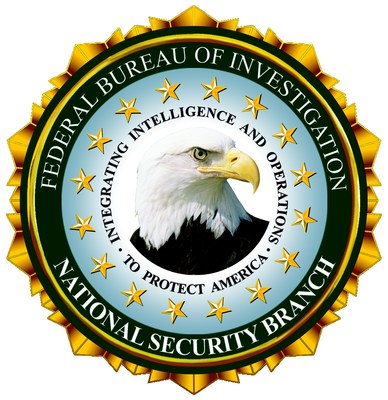Overview
Overview
Overview

The National Security Branch (NSB) was established in September 2005 in response to a presidential directive to establish a “National Security Service” that combines the missions, capabilities, and resources of the FBI’s counterterrorism, counterintelligence, and intelligence elements under the leadership of a senior FBI official. The NSB is composed of the Counterintelligence Division, Counterterrorism Division, High-Value Detainee Interrogation Group, Terrorist Screening Center, and WMD Directorate.
The National Security Branch carries out the FBI’s responsibilities as the lead intelligence and law enforcement agency in the nation to detect, deter, and disrupt national security threats to the United States and its interests. Our goal is to collect, analyze, and share intelligence to develop a comprehensive understanding of—and to defeat—national security threats directed against the United States while preserving civil liberties.
We continue to refine our intelligence capabilities to position ourselves to stay ahead of the evolving threats our nation faces. Intelligence directs how we understand threats, how we prioritize and investigate these threats, and how we target our resources to address them.
To ensure success, we continue to integrate our intelligence and law enforcement capabilities in every operational program. The traditional distinction between national security and criminal matters is increasingly blurred as terrorists commit crimes to finance their activities and computer hackers create vulnerabilities that can be exploited. The integration of intelligence and investigations makes the FBI uniquely situated to address these threats and vulnerabilities across programs. The FBI draws on both intelligence and law enforcement tools to determine strategically where and when to disrupt threats.
The FBI’s daily successes in addressing these national security threats are reinforced by longstanding relationships with our public, private, federal, state, local, tribal, and territorial partners. With thousands of private and public business alliances and nearly 4,000 interagency members on our Joint Terrorism Task Forces—interagency teams of federal, state, and local partners that carry out the FBI’s responsibility for leading and coordinating all intelligence and investigative activity involving terrorism—the FBI’s partnerships are essential to achieving our mission and ensuring a coordinated approach to addressing national security threats.
| NSB Links |
|
Inside the NSB |

